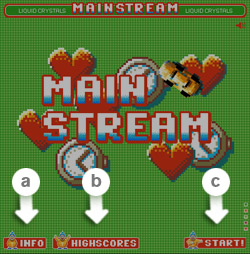
a) Click on "Info" to find out how to navigate your vehicle.
b) Click on "Highscores" if you want to see other people's scores.
c) Click on "Start" when you are ready to start the game.
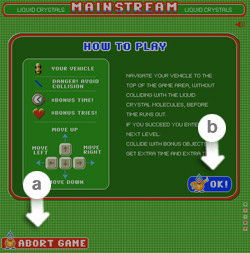
a) Click on "Abort game" if you want to quit.
b) Click on "Ok!" if you want to start.
Navigate your vehicle to the top of the game area, without colliding with the liquid crystal molecules, before time runs out. If you succeed you will enter the next level. Hit the bonus objects to get extra time and extra tries.
There are a never ending number of levels. Levels 1-6 are all based on real patterns found in liquid crystals, we have created the pattern in level 7 specially to test your skills with the arrow keys! At the end of this Help document you will find a glossary to help explain some of the technical terms used to describe the different patterns found in liquid crystals.
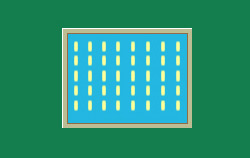
Level 1: The crystalline phase
Liquid crystal molecules in the crystalline phase behave like solid matter. The molecules have fixed positions and are arranged in symmetrical patterns. The orientation of the molecules is ordered.
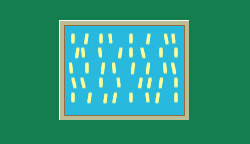
Level 2: The smectic-A phase
The molecules in a smectic-A liquid crystal are ordered in layers. The molecules float around within the layers but not between different layers. The average orientation of the molecules in a smectic-A liquid crystal is at 90 degrees from the direction of the layers.
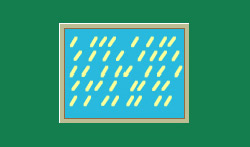
Level 3: The smectic-C phase
Like the smectic-A phase, the molecules in a smectic-C liquid crystal are ordered in layers and the molecules can only float around within the layers but not between the layers. The average orientation of the molecules in a smectic-C liquid crystal is at a tilt to the direction of the layers.
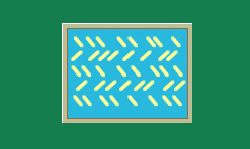
Level 4: The smectic anti ferroelectric liquid crystal
In this arrangement of liquid crystals the molecules tilt in opposite directions in altering layers.
A ferroelectric material is just like a magnet, but instead of a magnetic field, a ferroelectric material has an electric field.
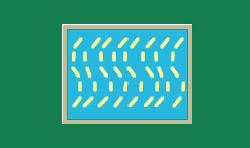
Level 5: The smectic chiral liquid crystal
The molecules in the liquid crystal are forced to change their orientation continuously which in turn produces a twisting pattern.
Chiral objects are objects that cannot be superimposed on its own mirror image, like left and right hand.
Level 6: The cholesteric phase
A cholesteric liquid crystal is formed by strongly chiral molecules in the nematic phase. In this phase, the molecules float around like a liquid but their orientation is ordered. The chirality forces the molecules in the liquid crystal to change their orientation continuously which in turn produces a twisting pattern.
Chiral objects are objects that cannot be superimposed on its own mirror image, like left and right hand.
Level 7: "The game phase"
This pattern of this level is not based on any real phase or behaviour of liquid crystals. Its simply been made up to make the game more enjoyable.
From here there are an infinite number of levels …
Glossary:
Smectic phase = closer to the solid phase. The liquid crystals are ordered in layers.
Nematic phase = the simplest of the liquid crystal phases and closer to the liquid phase. Molecules float around like in a liquid, but are still ordered in their orientation.
Cholesteric = a special case of the nematic phase is called cholesteric. The molecules are closely aligned within a distinct series of layers, with the axes of the molecules lying parallel to the plane of the layers and with the orientation of molecules in adjacent layers rotated slightly.